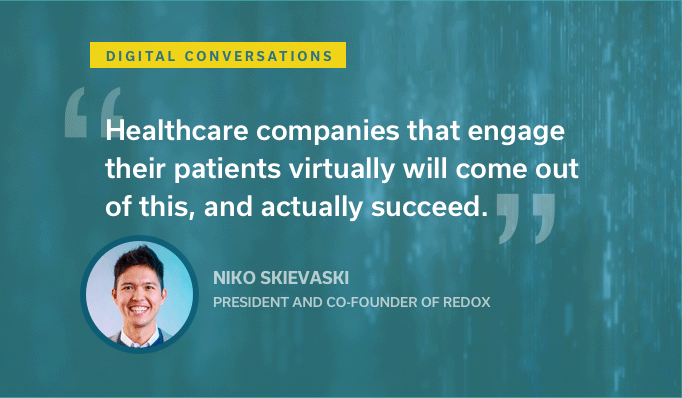Recently, I leased a new BMW X3. As you might imagine, this version of the “ultimate driving machine” is brimming with bleeding edge tech to complement its famed German design and performance. It’s a beautiful looking car and a blast to drive. BMW even takes their marketing tagline a step further by declaring their cars deliver “The ultimate driving experience.”
But there’s a problem.
When driving my X3, I frequently find myself completely distracted fiddling with the array of gadgetry that is embedded across the dashboard, steering wheel, and console. In an effort to change the music or defog the window, I have driven for miles completely focused on something other than the road.
There are buttons and paddles on the steering wheel, buttons and knobs on the dashboard, a primary interactive touch screen screen, three secondary displays, and a console touch pad adjacent to a five-way control wheel, adjacent to four other control buttons.
If one of my back seat passengers is a little warm, I must perform an intricate sequence of moves to activate the multi-zone climate control without messing up the saved master climate configuration that I previously spent an hour setting up while sitting in my driveway.
All of these UI points have redundant functions, yet none have anything to do with actually driving the car — it’s got a steering wheel, gas and brake pedals, and a transmission shifter for the purpose of driving from point A to point B.
The configuration capabilities are off the charts. For some people, the ability to dial in a car to their particular desire is worth thousands of dollars in premium tech package options at the BMW dealership. But what about the rest of us? Like, the 98 percenters that just want to drive a nice car, who want to easily play their music, make the navigation work, and keep the temperature at a cozy 76 degrees?
For those of you old enough to remember, this reminds me of the VHS video tape recorders from the 1980s. Most couldn’t figure out the timer programming sequence, so they’d just throw their hands up and tolerate the non-stop blinking digital display that read 12:00AM. Blinking VCRs were a common sight across living rooms in the 1980s. There’s actually a name for this phenomenon called “the blinking twelve problem”.
For what it’s worth, I’m fairly technical and never had a problem programming my VCR, but the new BMW dashboard is at an entirely different level. I do not think I am alone here.
Technology designers can’t expect people to read directions or devote a lot of time learning how to work something that is complex to begin with.
Google: The Ultimate User Experience
When it comes to consumer technology of today, it’s hard to ignore the beautiful simplicity of Google. Just type (or say) anything, and thousands of “answers” appear in seconds. One simple white box in the middle of a white web page. ANYBODY can figure it out.
Take that same person from 1984 who struggled with the blinking VCR clock, give them access to Google and watch them go. They’d be mesmerized for hours. No training, easy, effective, highly satisfying. Imagine yourself in 1984 being able to experience Google. I’d start with...
“What’s the best selling album of all time?”
Google: The Eagles’ Greatest Hits“How tall is the Eiffel Tower?”
Google: It's an iron lattice tower that stands 984 feet tall“What does BMW stand for?”
Google: BMW stands for Bayerische Motoren Werke
But we all know, and at times forget, that Google’s beautifully simple point of engagement is powered by a massive platform behind the scenes. The combination of algorithms, hardware, network infrastructure, global data centers, site indexing, and so on is what makes Google one of the most valuable tools in the world.
If Google were an iceberg, the search window would be a little white, frozen island about the size of my X3, with a below-the-waterline platform about the size of a very large mountain — like California’s 14,180' Mt. Shasta (Shasta height courtesy of Google, BTW). The google stats are amazing.
Will a Google-esque Experience Come to Healthcare?
As an industry, and despite its massive size, Healthcare lags when it comes to innovation. In the past few decades, billions have been invested in digitizing records. Electronic Medical Record (EMR) systems are fairly common today, yet they still suffer from low adoption and data standardization issues. Technology engagement at the patient level is weak because most healthcare tech lacks Google-like simplicity and requires too many hurdles to access and learn.
There may be hope on the horizon for patients. Thanks in part to investments by companies like Google, Apple, Facebook, and Amazon, conversational technology is advancing rapidly. Anyone that has asked Siri about the Eiffel tower knows the days of clunky, confusing interfaces are giving way to simple, conversational chatbot assistants. Ask a question, get an answer. What a no brainer, right?
Unfortunately in healthcare, answers are typically pretty hard to come by. Album sales, mountain stats, and other basic questions are handy, but not in the same league as helping a patient navigate a surgical procedure or a chronic medical condition. Healthcare is incredibly complex and highly regulated. Failure is, quite literally, not an option. While it may be an unfortunate customer service issue for an online retailer to ship the wrong product, an IT mistake in healthcare could actually kill someone. The tech must be as perfect as it is simple and useful.
The good news is that much of the conversational innovation that’s been developed for the various consumer spaces is maturing into healthcare grade. However, there’s still an immense industry-specific, platform-level requirement to enable rich and effective conversational patient tech experiences in healthcare.
Healthcare digital assistants must be able to interact with IT systems and patients in the context of established, regulated workflows. To be successful, they also must be highly flexible to accommodate the broad range of care scenarios and workflows, while also walking the regulatory tightrope.
Like Google, the future of conversational engagement is in what lies below the waterline — the conversational engagement platform. For the patient, it may be an exchange of information on a mobile phone related to a simple surgical procedure. Interactive messaging via text or voice can help prepare and inform patients, while simultaneously collecting vital bits of data for the provider. Below the waterline, a robust platform is interacting with various systems of record at the provider ensuring proper information is being utilized, it’s surfacing tested, proven conversational workflows, it’s fast, and it’s doing it thousands of times a second in a secure, HIPAA compliant environment.
The complexity isn’t going away, but advanced conversational chatbots with the right underlying platform can engage patients and help them successfully navigate healthcare with the relative ease of using Google. That’s advanced, modern, consumer grade technology for healthcare — the ultimate patient experience.








